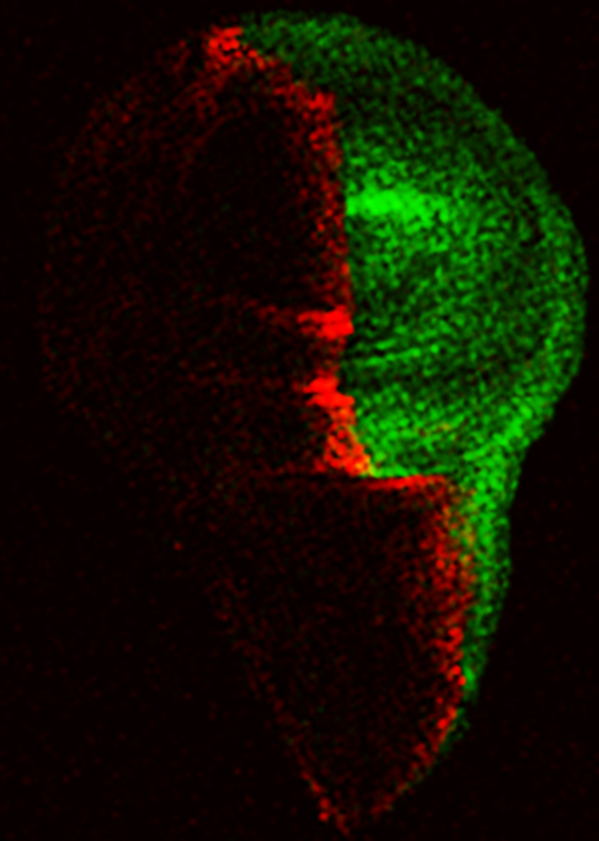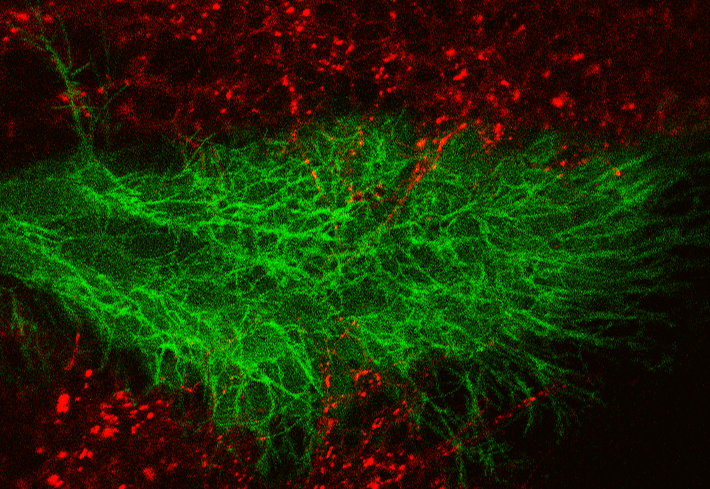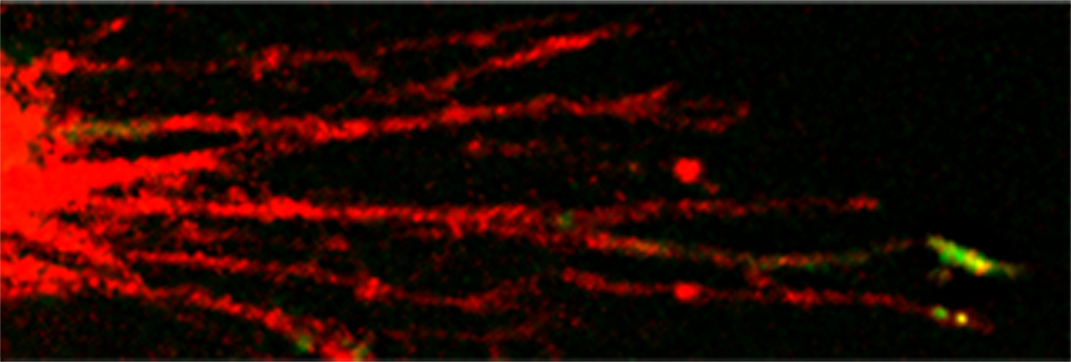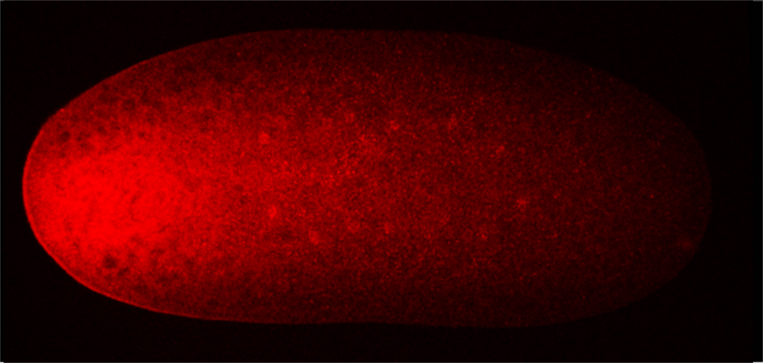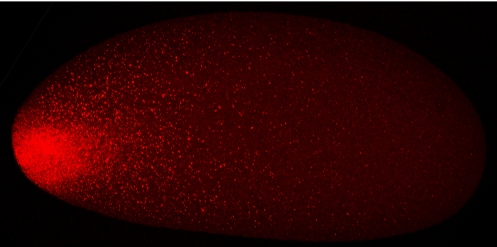Hedgehog signaling
Following on from our cloning of the Drosophila hedgehog (hh) gene (Tabata and Kornberg, 1992), our studies showed that the secreted Hh protein moves across segment borders in the embryo and across the Anterior/Posterior compartment border in the embryo and in the wing imaginal disc (Tabata and Kornberg, 1994)...
Signal protein dispersion and constraint
Signaling proteins such as FGF, EGF, Hh, Dpp, and Wingless play vital roles during the induction, growth and patterning of tissues and organs in Drosophila. The mechanisms that move these signaling proteins, often over long distances, or that constrain them to signal only to their intended targets, have been investigated for many years; we have obtained strong evidence that movement and delivery is based direct cell-cell contact.
Regulation and genetic control in the early embryo
For many animals, rapid divisions during the first stages of embryogenesis generate a population of undetermined cells that acquire developmental distinctiveness only as they prepare for gastrulation. These first stages have been thought to contribute little or no spatial information, and in animals such as amphibians, fish and insects, to rely entirely on maternal stores. In Drosophila, for example, the early divisions proceed with a cycle time of 9.6 min, and reportedly without gene expression. We discovered a small cohort of genes that is expressed at the early, pre-blastoderm stages.
